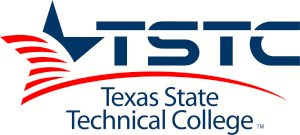Related Research Articles

The Texas A&M University System is a state university system in Texas and is one of the state's six independent university systems.
The University of the State of New York is the state of New York's governmental umbrella organization for both public and private institutions in New York State. The "university" is not an educational institution: it is, in fact, a licensing and accreditation body that sets standards for schools operating in New York State, from pre-kindergarten through professional and graduate school, as well as for the practice of a wide variety of professions. The group of people who make decisions about and for USNY is known as the New York State Board of Regents.
The Georgia Board of Regents oversees the University System of Georgia as part of the state government of Georgia in the United States. The University System of Georgia is composed of all state public institutions of higher education in the state. The Board of Regents also preside over the Georgia Public Library Service.

The University System of Georgia (USG) is the government agency that includes 26 public institutions of higher learning in the U.S. state of Georgia. The system is governed by the Georgia Board of Regents. It sets goals and dictates general policy to educational institutions as well as administering the Public Library Service of the state which includes 58 public library systems. The USG also dispenses public funds to the institutions but not the lottery-funded HOPE Scholarship. The USG is the sixth largest university system in the United States by total student enrollment, with 333,507 students in 26 public institutions. USG institutions are divided into four categories: research universities, regional comprehensive universities, state universities, and state colleges.

Austin Peay State University is a public university in Clarksville, Tennessee. Standing on a site occupied by a succession of educational institutions since 1845, the precursor of the university was established in 1927 and named for then-sitting Governor Austin Peay, who is further honored with "Governors", the name of the university's athletic teams. Affiliated with the Tennessee Board of Regents, it is now governed by the Austin Peay State University Board of Trustees as of May 2017. The university is accredited by the Southern Association of Colleges and Schools (SACS) and, in 2012, was the fastest-growing university in Tennessee. In 2019, Austin Peay officially hit 11,000 students enrolled.

Texas State Technical College (TSTC) is a public community college with 10 campuses throughout Texas. TSTC is the State of Texas's only public multicampus technical college, offering associate degrees and certificates in technical skills and trades. TSTC's headquarters are located north of Waco and are co-located with the Waco campus, the oldest TSTC location and flagship location. TSTC also operates campuses in Harlingen, Marshall, Red Oak, Abilene, Breckenridge, Brownwood, Sweetwater, Williamson County, and Fort Bend County.

Lamar Institute of Technology (LIT) is a public technical school in Beaumont, Texas. LIT was formerly a part of Lamar University, but became a separate institution when the university joined the Texas State University System in 1995.

The Oklahoma Department of Career and Technology Education is an agency of the state of Oklahoma located in Stillwater, Oklahoma.

The Colorado Commission on Higher Education (CCHE) was established in 1965 by the Colorado General Assembly. The Commission replaced an association which met informally to consider matters related to higher education. The Colorado Department of Higher Education (DHE) is the principal department of the Colorado state government responsible for implementing the policies of the CCHE.
The Tennessee Board of Regents is a system of public universities in the U.S. state of Tennessee. It is one of two public university systems, the other being the University of Tennessee system. It was authorized by an act of the Tennessee General Assembly passed in 1972. The TBR supervises all public community colleges and technical colleges in the state, dealing with over 140,000 students annually.
The Ohio Library and Information Network (OhioLINK) is a consortium of Ohio's college and university libraries and the State Library of Ohio. Serving more than 800,000 students, faculty, and staff at 88 institutions with 117 libraries, OhioLINK's membership includes 16 public universities, 23 community/technical colleges, 48 private colleges and the State Library of Ohio. OhioLINK serves faculty, students, staff and other researchers via campus-based integrated library systems, the OhioLINK central site, and Internet resources.

The Oklahoma State Department of Education is the state education agency of the State of Oklahoma charged with determining the policies and directing the administration and supervision of the public school system of Oklahoma. The State Board of Education, the governing body of the Department, is composed of the Oklahoma State Superintendent of Public Instruction and six members appointed by the Governor of Oklahoma with the approval of the Oklahoma Senate. The State Superintendent, in addition to serving as chair of the Board, serves as the chief executive officer of the Department and is elected by the voters of Oklahoma every four years.

The Oklahoma State Regents for Higher Education is the agency of the government of Oklahoma that serves as the governing body of the Oklahoma State System of Higher Education, which is the largest provider of higher education in the state of Oklahoma. The State System consists of all institutions of higher education in Oklahoma that are supported by direct legislative appropriations from the Oklahoma Legislature.
The Oklahoma State System of Higher Education is the state's legal structure for providing public education at the collegiate level. It is a coordinated system of colleges and universities located throughout the state.
The government of Nevada comprises three branches of government: the executive branch consisting of the Governor of Nevada and the Governor's cabinet along with the other elected constitutional officers; the legislative branch consisting of the Nevada Legislature which includes the Assembly and the Senate; and the judicial branch consisting of the Supreme Court of Nevada and lower courts.
The Kentucky Council on Postsecondary Education coordinates change and improvement in Kentucky's postsecondary education system as directed by the Kentucky Postsecondary Education Improvement Act of 1997. The Council is a statewide coordinating agency with sixteen members: fourteen citizens, one faculty member and one student appointed by the Governor; the Commissioner of Education is an ex officio member.

The Executive Branch Reform Act of 1986 is an Oklahoma state law that requires the Governor of Oklahoma to organize the various 500 or more departments, agencies, boards, commissions and other entities of the state's executive branch into a cabinet system. The act grouped state agencies into clusters with an informational link to a cabinet secretary. But the legislation stopped short of consolidating agencies or the decision-making authority of the agencies, boards and commissions.

The Superintendent of Public Instruction, sometimes referred to as the State Superintendent of Schools, is a constitutional officer within the executive branch of the Wisconsin state government, and acts as the executive head of the Department of Public Instruction. The State Superintendent is elected by the people of Wisconsin in a nonpartisan statewide ballot during the spring primary six months after the presidential election with one justice of the Supreme Court of Wisconsin.
The Board of Regents for Higher Education (BOR) is a government body in the U.S. state of Connecticut that oversees the Connecticut State Colleges & Universities (CSCU). CSCU and the BOR were created on July 1, 2011, consolidating the governance of the state's twelve community colleges, four state universities, and Charter Oak State College. The BOR assumed the powers and responsibilities of the respective former Boards of Trustees and the Board for State Academic Awards; it also retains many responsibilities for setting statewide policy of the former Board of Governors for Higher Education.
References
- ↑ "House Bill 64 - Documents | The Ohio Legislature". www.legislature.ohio.gov. Retrieved 2019-08-16.